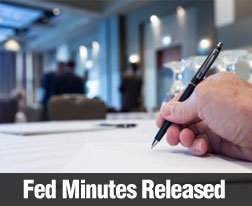Case-Shiller Housing Market Index: Home Prices Rise in July
 U.S. home prices rose by 0.10 percent in July according to the S&P Case-Shiller Housing Market Index. San Francisco, California edged past Denver Colorado with a year-over-year price increase of 10.40 percent as compared to Denver’s reading of 10.30 percent. All year-over-readings for the 20-City Home Price Index posted gains, but Washington, D.C. showed the lowest year-over0-year growth rate at 1.70 percent. Chicago, Illinois and New York City followed closely with year-over-year readings of 1.80 percent and 1.90 percent respectively.
U.S. home prices rose by 0.10 percent in July according to the S&P Case-Shiller Housing Market Index. San Francisco, California edged past Denver Colorado with a year-over-year price increase of 10.40 percent as compared to Denver’s reading of 10.30 percent. All year-over-readings for the 20-City Home Price Index posted gains, but Washington, D.C. showed the lowest year-over0-year growth rate at 1.70 percent. Chicago, Illinois and New York City followed closely with year-over-year readings of 1.80 percent and 1.90 percent respectively.
Seasonally-Adjusted Home Prices Fall
Although seasonally-adjusted home prices typically rise during the peak home selling season during spring and summer, July’s reports indicated that seasonally-adjusted home prices fell by 0.20 percent in July. Factors including tough mortgage approval requirements and low inventories of available homes likely contributed to slower growth in home prices as demand for homes fell.
Would-be home buyers may also have sat on the sidelines awaiting the Federal Reserve’s decision regarding raising rates. The Fed has not raised rates yet, but may do so in October. Mortgage rates are expected to rise when the Fed raises its target federal funds rate, which is currently set at 0.00 to 0.25percent.
Western Cities Lead Home Price Growth
Case-Shiller reported that as of July, the West continues to see the highest rates of home price growth. Over the past 12 months, only San Francisco and Denver have shown double-digit growth in home prices. Los Angeles, San Francisco and San Diego, California have shown the strongest increases in home prices since 2000.
Home prices for cities included in the 20-City Index have risen 35.70 percent since home prices hit their post -recession low in 2012, but remain 13 percent below the housing bubble’s peak prices. All cities in the 20-City Index posted price gains year-over-year as of July and 14 cities posted higher price gains than for the comparable period ending in July 2014.
Trend: Modest Home Price Growth Continues
The Federal Housing Finance Agency recently posted a year-over-year gain of 5.80 percent for home prices associated with mortgages owned or backed by Fannie Mae and Freddie Mac. This news further supports the trend of moderate gains in U.S home prices; moderate growth in home prices could encourage more moderate-income and first-time home buyers to buy homes, particularly in advance of the anticipated increasein mortgage rates when the Federal Reserve raises interest rates.

 The National Association of Home Builders (NAHB) / Wells Fargo Housing Market Index reported that home builder confidence rose by one point to a reading of 62 for September. This was the highest reading since November 2005, when the NAHB reported a reading of 68 for home builder confidence. Any reading above 50 indicates that more builders are confident about housing market conditions than those who are not.
The National Association of Home Builders (NAHB) / Wells Fargo Housing Market Index reported that home builder confidence rose by one point to a reading of 62 for September. This was the highest reading since November 2005, when the NAHB reported a reading of 68 for home builder confidence. Any reading above 50 indicates that more builders are confident about housing market conditions than those who are not. Last week’s economic news included reports on construction spending, private and public sector employment data and a report from the Fed indicating that any move to raise interest rates may be delayed. The details:
Last week’s economic news included reports on construction spending, private and public sector employment data and a report from the Fed indicating that any move to raise interest rates may be delayed. The details: